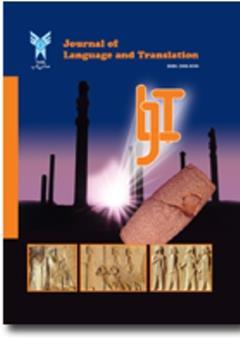Literature, Myth and Archetype in Shahnameh: A Correlational Study
Subject Areas : All areas of language and translationRoghayeh Karimzadeh Naghshineh 1 *
1 - South Tehran Branch, Islamic Azad University, Tehran, Iran
Keywords: Archetype, Epic, Literature, Myth,
Abstract :
Myths and archetypes are both significant components of literature and are intricately intertwined with one another. The former provides a context for the latter. The purpose of this research is to shed light on the connections that may be drawn between different archetypes that appear in different myths. The author draws a conclusion from their examination of the characteristics of myth, namely that in order to have a complete understanding of how myth is portrayed in literature, we must first investigate the hidden mythical archetypes. Simply skimming through some of the most well-known fabled stories won't do the subject due. In order to have a complete comprehension of a piece of writing, it is necessary to think about the structural components of the collective unconscious mind and the fixations of the human psyche (archetypes) that have been presented in written works. Because of the intimate relationship between literature and myth, which provides the background for archetypes. The analytical-descriptive technique has been used in this paper.
Abrams, A. H. (1997). A Glossary of Literary Terms. Rinehart.
Anoushe, H. (1997). Persian Literary Dictionary. Tehran: Ministry of Culture and Islamic Guidance.
Cuddon, J. A. (1984). A Dictionary of Literary Terms. Penguin Books.
Eliadeh, M. (1983). A View of Myth. Tehran: Tus. (Translation by Jalal Sattari).
Ferdowsi, A. Q. (1971). Shahnameh. Moscow: Publications of the Academy of Sciences of the Soviet Union. (Editor: Bertels).
Fry, N. T. (1993). Takhel Farhikhta. Tehran: University Press.
Green, W., & others. (1997). Basics of Literary Criticism. Tehran: Nilofar. (Translation by F. Taheri).
Hoff, G. (1987). A Talk by Amir Kabir and Nasrin Parvini on Criticism, Delivered in Tehran.
Kezazi, M. J. (1989). From a Type of Pot: Essays in Iranian Literary Culture. Tehran: Center.
Kezazi, M. J. (1991). Secret Mazes: Essays in Shahnameh. Tehran: Central.
Khaleghi Moghadam, J. (2002). Old Sayings. (A. Dehbashi, Trans.). Tehran: Afkar.
Makarik, I. R. (2004). Encyclopedias of Contemporary Literary Theory. Tehran: Agah. (Translations by M. Mohajer & M. Nabavi).
Mir Sadeghi, M. (1997). Mir Sadeghi's Dictionary of Poetic Art. Tehran: Mahnaz Book.
Mir Sadeghi, M., Mayment, & Jamal. (1998). Dictionary of the Art of Story Writing. Tehran: Mehnaz Book.
Ping, F. C. G. (1993). Worldview. Tehran: Tus. (Translation by J. Sattari).
Sarami, Q. A. (1999). Beginning with the Beauty of the Flower and Ending with the Agony of the Thorn: The Morphology of Shahnameh Tales. Tehran: Scientific-Cultural Scene.
Satari, J. (2003). An Introduction to Mythology. Paul Firouze's Quarterly in the Field of Dialogue Between Civilizations, Special Emphasis on Mythology, 2nd Year, 7th Issue, Spring 2003.
Shaygan, D. (2001). Mental Idols and Eternal Memory. Tehran: Amir Kabir.
Shaygan Far, H. R. (2010). An Introduction to the Many Schools of Criticism. Tehran: Dostan.
Shamisa, S. (1999). Literary Critique. Tehran: Ferdous.
Schorermark. S. (1994). William Blake's "The Politics of Vision." New York: Rinehart and Winston.

